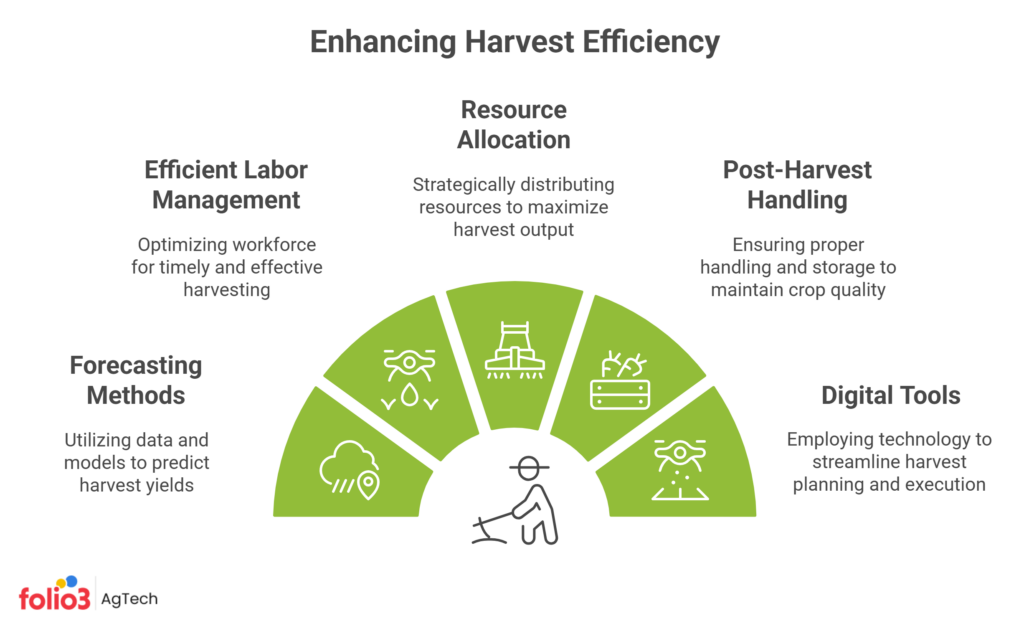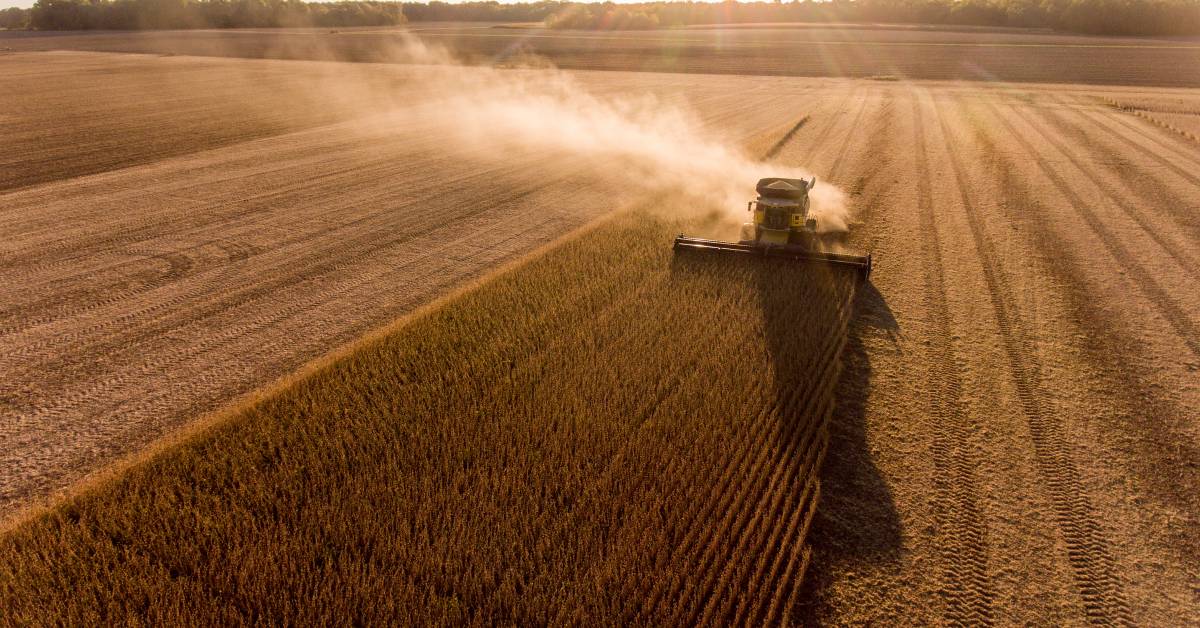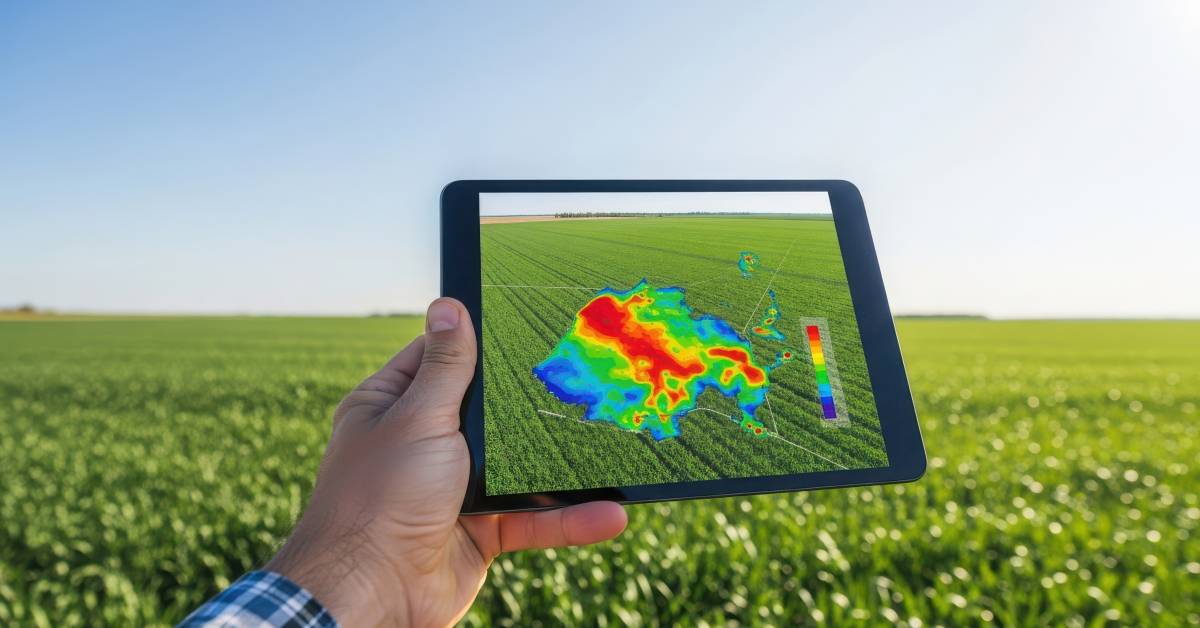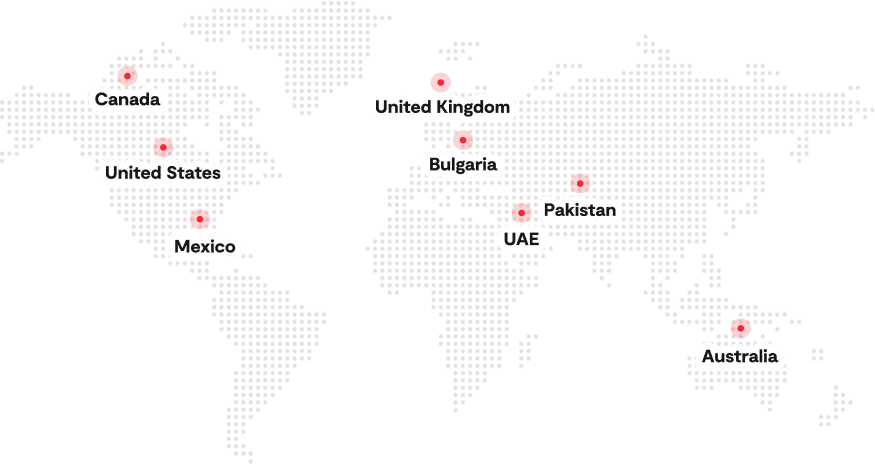In 2025, harvest planning is no longer a task that can be left to instinct or tradition. Farmers and agribusinesses face mounting challenges as global demand for food continues to rise, labor shortages tighten margins, and climate unpredictability makes it harder to rely on fixed schedules. The difference between a well-planned harvest and a poorly managed one can mean the loss of entire crops, financial setbacks, and missed market opportunities. The FAO estimates that 13.2% of global food production is lost after harvest during transport, storage, and processing stages, underscoring how critical proper planning has become.
Strong harvest planning ensures crops are collected at peak quality, resources are used efficiently, and distribution runs smoothly. It also helps farms adapt to sudden changes, whether from extreme weather, workforce disruptions, or shifts in buyer demand. On the consumer side, structured harvest planning minimizes risks like missed supermarket contracts, penalties from buyers, and gaps in sustainability reporting. By treating harvest as a coordinated process, farmers can reduce waste, increase yields, meet buyer expectations, and safeguard profitability.
In this blog, we’ll break down why harvest planning matters more than ever, the essential elements of a strong harvest plan, the challenges that threaten success, and proven strategies to overcome them. We’ll also explore how modern solutions like Folio3 AgTech’s Harvest Management Software give farmers the tools to forecast more accurately, manage resources better, and keep operations sustainable.
Why Harvest Planning Matters
For decades, harvest planning was primarily based on experience and observation. Farmers relied on tradition, intuition, and manual labor to decide when and how to bring in their crops. While these methods worked in more predictable conditions, they are no longer enough to address the complexity of modern farming.
Today, growers face challenges that make structured harvest plans essential. Climate unpredictability means shifts in temperature, rainfall, and extreme events can disrupt established schedules. Labor shortages compound the issue, leaving farms without enough hands during peak harvest windows. At the same time, rising input costs and fluctuating market prices demand precise timing to maximize profitability. Poor planning under these conditions often results in significant losses, from reduced yields and downgraded quality to missed delivery deadlines that erode buyer trust.
The financial risks are equally severe. A single delay in harvest can lead to crops spoiling in the field, while inadequate resource allocation may drive up costs for equipment, storage, and transportation. These inefficiencies reduce margins and make it harder for farms to compete in an increasingly globalized market.
Harvest planning is about aligning timing, resources, and market demand in a way that reduces waste and protects profitability. Strong, data-driven harvest plans have become a cornerstone of resilience, ensuring farms can adapt quickly to changing conditions while still meeting production and financial goals.
Core Elements of a Strong Harvest Plan
A strong harvest plan is more than a checklist; it is a framework that connects every part of the farming operation. Effective harvest planning ensures that crop maturity, labor, equipment, storage, and logistics all align to reduce losses and improve efficiency. Without a structured approach, even minor oversights can result in wasted crops, higher costs, and missed market opportunities. By focusing on the core elements of harvest planning, farmers can turn a challenging season into one that supports profitability, sustainability, and long-term growth. Below are the key elements that make up a successful harvest plan.
Scheduling by Crop Readiness
At the heart of effective harvest planning is knowing when each crop is ready for collection. Maturity indicators, weather forecasts, and market timing all need to align. Harvesting too early reduces quality, while waiting too long can lead to spoilage or loss. A clear schedule, supported by proven crop management practices, ensures crops are picked at peak value and waste is minimized.
Labor Allocation
Labor shortages continue to challenge farms in 2025, making it essential to plan. Harvest planning should include workforce forecasting, training, and task assignments. Allocating labor based on crop readiness helps maximize productivity and reduce downtime. This structured approach ensures the right number of workers are available when and where they are needed.
Equipment and Storage Preparation
Breakdowns or unprepared storage facilities can derail even the best harvest plans. Regular equipment maintenance, fuel readiness, and backup tools should be part of every plan. Storage preparation is equally critical, with clean, temperature-controlled spaces ensuring that crops maintain quality until they reach buyers.
Logistics and Distribution Planning
Harvesting is only half the job. Distribution logistics, from transport scheduling to cold chain monitoring, protect product quality on the way to market. Well-organized harvest plans integrate delivery routes, partner availability, and buyer requirements to avoid costly delays. Farmers who plan logistics early safeguard profitability and customer satisfaction.
Together, these elements form the backbone of strong harvest planning. By synchronizing scheduling, labor, equipment, storage, and logistics, farms can reduce waste, improve efficiency, and ensure consistent returns with the support of the role of an ERP in the agriculture supply chain.
Key Challenges in Harvest Planning
Even the most carefully designed harvest plans face obstacles that can disrupt timelines and reduce profitability. In 2025, farmers are under constant pressure to adapt quickly to a mix of environmental, operational, and market challenges. Before we move toward the strategies to improve outcomes, it is essential to understand the key challenges in harvest planning that farmers must overcome.
Unpredictable Weather and Climate Risk
Weather remains one of the most significant variables in harvest planning. Sudden storms, heatwaves, or unexpected frosts can damage crops and throw off harvest schedules. Climate unpredictability forces farmers to build flexibility into their plans while relying on forecasting tools for better decision-making.
Labor Shortages and Costs
Labor availability is another critical challenge. With fewer seasonal workers and rising wage costs, it has become harder to assemble the workforce needed during peak harvest windows. Poor labor planning often leads to delays, reducing both crop quality and yield.
Storage and Cold Chain Gaps
Without proper crop or grain storage facilities or reliable cold chain systems, harvested crops quickly lose quality. Many farms still struggle with outdated infrastructure, leading to higher post-harvest losses and reduced market value, especially when grain quality control techniques are not prioritized.
Coordination with Buyers and Distributors
Harvest planning also depends on aligning with buyers and distributors. Mismatched timelines or transportation delays can leave produce sitting too long, increasing waste and financial losses. Strong coordination is essential to turn a successful harvest into a market-ready product.
Together, these challenges highlight why structured harvest planning is more critical than ever. Anticipating risks and addressing weak points helps farmers protect both their yields and profitability.
Strategies to Improve Harvest Planning and Yields
Improving harvest planning in 2025 requires more than just tradition and experience. Farmers today must combine technology, data, and best practices to navigate challenges and secure consistent yields. Below are strategies that are helping farms operate more efficiently and profitably.

Forecasting Methods
Strong planning begins with accurate forecasting. By using weather-based models, AI-powered analytics, and historical yield data, farmers can create reliable harvest forecasts that guide decisions throughout the season. Harvest forecast integration allows growers to predict maturity windows, anticipate risks, and schedule harvest activities with greater precision.
Efficient Labor Management
Labor shortages remain one of the most significant barriers in agriculture, making efficient labor allocation critical. Harvest plans should account for peak demand periods, with scheduling tools ensuring workers are available at the correct times. Proper training and clear task assignments reduce errors and help maximize productivity during tight harvest windows.
Resource Allocation
Machinery, fuel, and storage facilities are limited resources that need to be managed carefully. Harvest-digital-planning solutions help farmers align equipment availability with crop readiness, reducing downtime and breakdown risks. Ensuring storage units are clean and ready also prevents losses from spoilage and inefficiency.
Post-Harvest Handling and Cold Chain Logistics
Even after crops are collected, proper handling determines their market value. Post-harvest losses often occur due to poor storage, inadequate refrigeration, or transport delays. Cold chain in agriculture ensures crops retain their freshness and safety from field to buyer, protecting both revenue and consumer trust.
Use of Digital Tools
Digital harvest management platforms and mobile planning apps are transforming how growers handle harvest planning. These tools integrate data from forecasts, labor schedules, equipment status, and market demand into a single dashboard. By centralizing information, digital tools reduce errors, save time, and make it easier to respond quickly to unexpected challenges. Farmers who embrace harvest-digital-planning not only improve efficiency but also increase resilience in a highly competitive market.
By applying these strategies, farmers can move beyond reactive decision-making to proactive management. Harvest planning becomes a continuous process that combines accurate forecasting, clever labor use, efficient resource allocation, and technology-driven insights to deliver stronger yields and profitability.
Step-by-Step Guide to Building a Harvest Plan
A harvest plan is more than a schedule; it is a blueprint that helps farmers align people, resources, and timelines to achieve the best possible outcomes. Whether managing a small farm or a large-scale operation, following a structured approach ensures consistency and reduces costly mistakes. Below is a practical step-by-step guide to creating effective harvest plans.
1. Gather and Assess Farm Data
The first step in harvest planning is gathering accurate information about the farm’s crops, acreage, soil fertility and health, and past performance. Historical yield records, weather data, and organic pest control or disease trends help farmers anticipate risks and opportunities. By analyzing this data, growers can identify patterns that influence harvest timing and productivity, setting a strong foundation for decision-making.
2. Define Crop Timelines
Every crop has a unique maturity window, and understanding this timeline is critical for sustainable crop production. Clearly mapping when each crop is expected to reach readiness ensures harvesting occurs at peak quality and prevents crop failure. Incorporating weather forecasts and market demand into these timelines also helps farmers decide whether to accelerate or delay harvesting. Precise crop timelines reduce waste and improve both yield and market value.
3. Match Resources with Needs
Once timelines are set, the next step is aligning resources. Labor, machinery, fuel, and storage facilities must be allocated according to the harvest schedule. Resource mapping prevents bottlenecks, such as not having enough workers during peak weeks or lacking equipment when multiple crops are ready simultaneously. Effective planning maximizes efficiency and reduces unnecessary downtime.
4. Plan Storage and Logistics
Storage and distribution often determine the financial success of a harvest. Clean, temperature-controlled storage facilities ensure crops remain fresh until they reach the buyer. At the same time, logistics planning addresses how crops will be transported, whether through internal fleets or third-party distributors. A harvest plan should also account for cold chain logistics where perishable produce is involved, ensuring quality is maintained from the field to the market.
5. Monitor and Adjust During Harvest
A harvest plan should not be static. Unexpected weather changes, labor shortages, or market shifts can all require real-time adjustments. Continuous monitoring, supported by digital dashboards or mobile apps, allows farmers to make quick, informed decisions during harvest. This flexibility ensures that even when disruptions occur, overall efficiency and profitability remain intact.
Successful harvest plans are built on accurate data, realistic timelines, and efficient resource use. By following these steps, farmers can reduce risks, capture higher-quality yields, and ensure smooth distribution to buyers. Just as importantly, a well-executed plan provides the flexibility needed to adapt when unforeseen challenges arise, making it a vital tool for modern farming.
6. Reducing Waste and Overproduction
Overproduction ties up resources, inflates storage costs, and often results in unnecessary waste. By aligning projected yields with actual market demand, farmers can optimize production levels and keep surplus under control. Incorporating real-time data and buyer agreements into harvest plans ensures that crops are harvested in the right quantities, maximizing profitability while minimizing losses.
7. Climate-Smart Harvest Scheduling
Unpredictable weather is one of the most significant risks to farming in 2025. Climate-smart agriculture scheduling builds resilience into harvest planning by using seasonal forecasts, local climate data, and risk modeling to determine the best harvest windows. This approach helps farmers avoid crop losses from unexpected rainfall, heat waves, or frost, while ensuring that quality standards are met. Integrating weather intelligence into harvest plans allows for quicker adjustments, protecting both yield and long-term soil health.
8. Aligning with Compliance and Sustainability Goals
Today’s markets and regulators expect farms to demonstrate accountability in sustainability and food safety. Building compliance into harvest plans ensures that documentation, labor practices, and environmental standards are met without scrambling after the fact. Whether it’s traceability requirements, food safety audits, or sustainability certifications, aligning harvest operations with these goals reduces risk and strengthens buyer confidence. Farmers who embed compliance and sustainability directly into their harvest plans not only meet legal obligations but also build trust with consumers and business partners.
While these strategies provide a solid foundation for effective harvest planning, their success often depends on having the right systems in place to put them into action. Managing timelines, coordinating labor, monitoring crop conditions, and tracking logistics can quickly overwhelm even the most experienced teams when handled manually. This is where modern technology from Folio3 Agtech steps in. By using digital tools designed specifically for agriculture, farmers can transform harvest plans from static documents into dynamic, real-time operations. The following section explores how advanced solutions like Folio3 Agtech are helping farms simplify harvest management, improve forecast accuracy, and address the very challenges that put yields and profitability at risk.
How Folio3 Agtech Supports Farmers With Harvest Planning
Harvest planning is only as strong as the tools used to manage it. Folio3 Agtech’s Harvest Management Software gives farmers real-time control over every stage of harvest, helping them anticipate problems and avoid costly mistakes. From forecasting yields to coordinating crews and transport, the platform brings together all the moving parts into one connected system. This reduces inefficiencies, strengthens traceability, and directly addresses the operational gaps that often derail harvest plans.
Key features include:
- Harvest Activity Dashboard: Monitor live harvest status by crew, block, and machine to act quickly when issues arise.
- Harvest Timeline Visualizer: Compare planned versus actual harvest times per field to spot inefficiencies and adjust resources in real-time.
- Geo-Tagged Harvest Logging: Log harvest loads with location, timestamp, and field data to improve traceability and yield tracking.
- Moisture Sensor Integration: Automate drying triggers and track spoilage risks with in-field and post-harvest sensors.
- Role-Based Access: Assign custom access levels to managers, contractors, and seasonal workers to protect sensitive workflows.
- Weighbridge & Load Sync: Reconcile harvest totals by syncing with weighbridge data to detect theft, overloading, or misreporting.
- Transport and Dispatch Tracking: Track trucks from the field to storage with arrival, loading, and delivery confirmation.
- Field Issue Flagging Tool: Flag problems with GPS and photos to resolve pest outbreaks, weather delays, or machine faults fast.
- Mobile Offline Data Capture: Log harvest data from any device, even without internet connectivity.
By integrating these tools, farmers can improve harvest forecast integration, minimize risks like storage losses or labor inefficiencies, and ensure harvest plans deliver on both yield and profitability. Folio3 AgTech helps farmers turn harvest planning into a reliable, data-driven process. With the right tools in place, farms can stay efficient, resilient, and profitable.
Conclusion
Good harvest planning comes down to timing, preparation, and smart use of resources. Farmers who plan ahead save money, cut waste, and boost yields, even when conditions are tough. Beyond the immediate season, structured harvest planning also helps manage risks from weather, labor, and market fluctuations, ensuring operations remain resilient and profitable.
With support from tools like Folio3 AgTech’s Harvest Management Software, it’s easier than ever to stay on top of every detail, from scheduling and forecasting to logistics and traceability. Strong harvest plans don’t just secure one season; they build a foundation for long-term sustainability, higher efficiency, and stronger market competitiveness.
FAQs
What Is Harvest Planning?
Harvest planning is the process of organizing when and how crops will be collected to maximize quality, reduce waste, and meet market demand. It involves scheduling, labor allocation, equipment preparation, and logistics coordination.
What Is a Harvest Schedule?
A harvest schedule is a detailed timeline that outlines when each crop should be harvested based on maturity, weather conditions, and buyer requirements. It helps farmers optimize timing to achieve peak yield and quality.
What Is a Harvest Model?
A harvest model is a forecasting tool that uses historical data, weather patterns, and predictive analytics to estimate yield, timing, and resource needs. It supports better planning and decision-making for the season.
What Is the Rule of the Harvest?
The rule of the harvest emphasizes that crops must be harvested at the right time and under the right conditions to protect yield and quality. Delays or premature harvesting can lead to reduced profits and higher losses.







